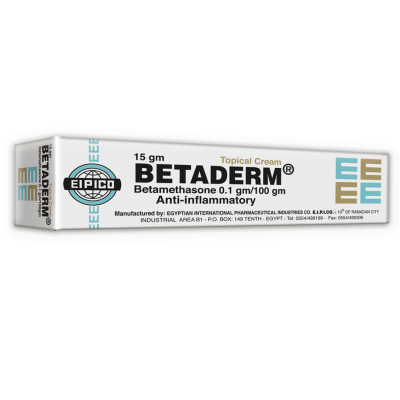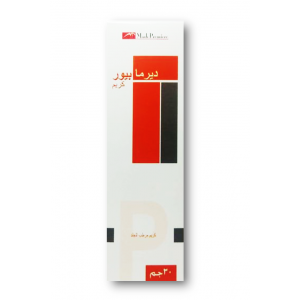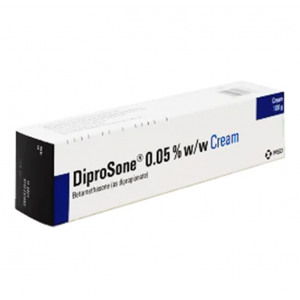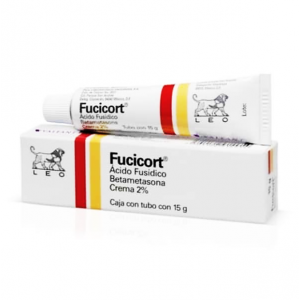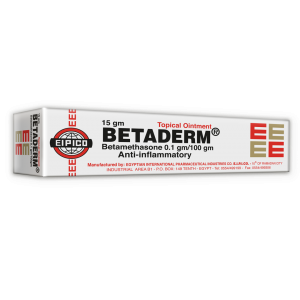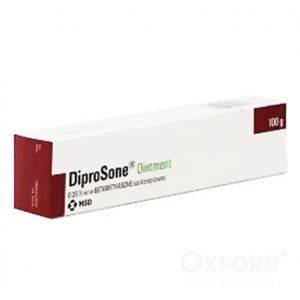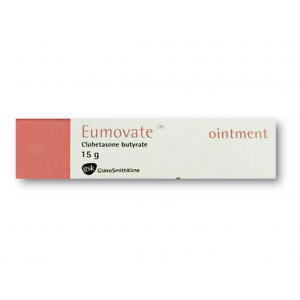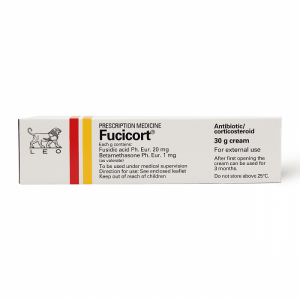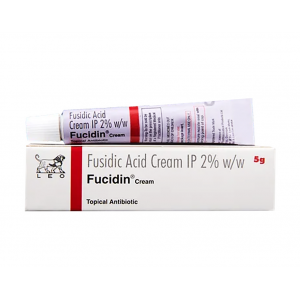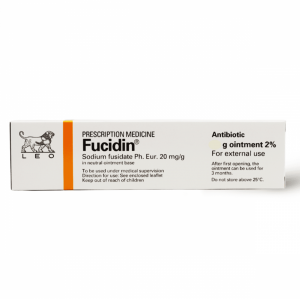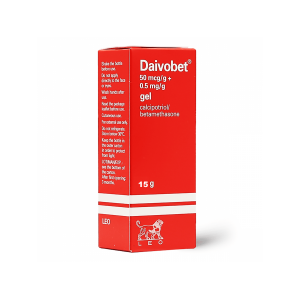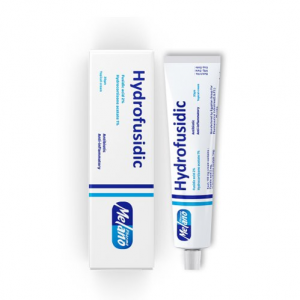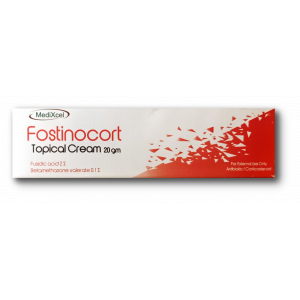- Anti-hestaminic & Respiratory Drugs (20)
- Anti-inflammatory Drugs (192) +-
- Baby & Mom (1322) +-
- Baby & Mom > Bath, skin & Hair > Skin Care > wibes (52)
- Beauty (3042) +-
- Beauty > Skin Care > whitening (306)
- Chemotherapy & Immune Response (883) +-
- Chemotherapy & Immune Response > ANTI-FUNGAL (11)
- Chemotherapy & Immune Response > Chemotherapeutic Agents > Hormone Antagonists >Enzyme Inhibitors (289)
- CIRCULATORY DISTURBANCE AGENTS (24)
- Diet & Fitness Products (284) +-
- DRUG AFFECTING CENTRAL NERVOUS SYSTEM (192)
- HEMATOLOGY (39)
-
Medical Supplies (503)
+-
- Chemicals & Disinfectants (19)
- Dental Supplies (31)
- Devices & Instruments (10)
- Diabetic Supplies (121)
- General Medical Supplies (21)
- I.V & Medical Solution (0)
- Intensive Care Unit & Anesthesia Supplies (0)
- KIDNEY UNIT SUPPLIES (21)
- Lab Supplies (3)
- Miscellaneous (21)
- Neonatal Unit Supplies (0)
- Operation Room Supplies (2)
- Sanitary (5)
- Sterilization Supplies (0)
- Surgical Sutures (4)
- Syringes (3)
-
Medicines & Health (2686)
+-
- Allergy & Sinus (95)
- Children's Health Care (54)
- Cough, Cold & Flu (277)
- Digestive Health & Nausea (233)
- Ear, Nose & Throat Care (179)
- Eye Care (124)
- Feminine Care (325)
- Foot Care (9)
- Orthopaedic Appliances (0)
- Pain Relief & Management (238)
- Pill Organizer (2)
- Skin Treatments (838)
- Sleep & Snoring Aids (2)
- Support & Braces (8)
- Medicines & health > Gout releif (42)
- Natural & Organic Products (81) +-
- OTC > Analgesics > Anti-inflammatory Drugs (44)
-
Personal Care (3269)
+-
- Bath & Body (271)
- Deodorant & Anti-perspirants (190)
- Ear, Nose & Throat Care (175)
- Eye Care (131)
- Feminine Care (374)
- Foot Care (17)
- Hair Care (472)
- Home Tests & Monitorings (14)
- Incontinence (7)
- Lip Care (22)
- Massage & Relaxation (17)
- Natural & Organic Personal Care (7)
- Oral Care (88)
- Pregnancy & Fertility (65)
- Shaving & Grooming (65)
- Sun Care (80)
-
Prescription Drugs (2913)
+-
- Analgesics (181)
- Cardiovascular System (374)
- Drugs Affecting Musculoskeletal System (65)
- Drugs Used In Infections (56)
- Ear & Nose Drugs (2)
- Endocrine System (176)
- Gastrointestinal Tract (244)
- Gastrointestinal Tract > Hepatology > Liver treatment (62)
- GYNECOLOGY (2)
- Miscellaneous (11)
- NEPHROLOGY > URINARY SYSTEM > RENAL DISORDERS > URINARY TRACT DISORDERS (46)
- NEUROLOGY (225)
- Nutrients & Blood Electrolytes (2)
- Respiratory System (154)
- SKIN > NAILS > HAIR > TOPICAL PREPARATIONS (99)
- Vaccines (1)
- Prescription drugs > Cardiovascular system > Anti-hypertension drugs (242)
- Sexual Wellness (301) +-
- Vitamins & Minerals Supplements (1212) +-
Ex Tax: 18EGP
Example
You can return the product within 14 days of purchase.
ReturnsYou can return the product within 14 days of purchase.

BETADERM 0.1% Cream ( Betamethasone ) 15 gm
Composition
Each 100 g contains:
Betamethasone (as valerate) .......................................................... 0.1 g
Inactive ingredients:
BETADERM Cream: Cetostearyl alcohol, sodium lauryl sulfate, white soft paraffin, sodium phosphate monobasic, chlorocresol, propylene glycol, purified water, heavy liquid paraffin.
BETADERM Ointment: Cetostearyl alcohol, white soft paraffin, propylene glycol, white bees wax, hard paraffin, heavy liquid paraffin.
Therapeutic Indications
BETADERM is a potent topical corticosteroid indicated for adults, elderly and children over 1 year, for the relief of the inflammatory and pruritic manifestations of steroid-responsive dermatoses. These include the following:
Atopic dermatitis (including infantile atopic dermatitis).
Seborrhoeic dermatitis.
Irritant or allergic contact dermatitis.
Nummular dermatitis (discoid eczema).
Prurigo nodularis.
Psoriasis (excluding widespread plaque psoriasis).
Lichen simplex chronicus (neurodermatitis) and lichen planus.
Discoid lupus erythematosus.
Adjunct to systemic steroid therapy in generalised erythroderma.
Insect bite reactions.
Dosage and Administration
Route of administration: Cutaneous.
Creams are especially appropriate for moist or weeping surfaces.
Ointments are especially appropriate for dry, lichenified or scaly lesions.
Apply thinly and gently rub in, using only enough to cover the entire affected area, once or twice daily for up to 4 weeks until improvement occurs; then reduce the frequency of application or change the treatment to a less potent preparation.
Allow adequate time for absorption after each application before applying an emollient.
In the more resistant lesions, such as the thickened plaques of psoriasis on elbows and knees, the effect of BETADERM can be enhanced, if necessary, by occluding the treatment area with polythene film. Overnight occlusion only is usually adequate to bring about a satisfactory response in such lesions; thereafter, improvement can usually be maintained by regular application without occlusion.
If the condition worsens or does not improve within 2-4 weeks, treatment and diagnosis should be re-evaluated.
Therapy with BETADERM should be gradually discontinued once control is achieved and an emollient continued as maintenance therapy.
Rebound of pre-existing dermatoses can occur with abrupt discontinuation of BETADERM.
Recalcitrant Dermatoses:
Patients who frequently relapse: Once an acute episode has been treated effectively with a continuous course of topical corticosteroid, intermittent dosing (apply once a day twice a week without occlusion) may be considered. This has been shown to be helpful in reducing the frequency of relapse.
Application should be continued to all previously affected sites or to known sites of potential relapse. This regimen should be combined with routine daily use of emollients. The condition and the benefits and risks of continued treatment must be re-evaluated on a regular basis.
Pediatric population:
BETADERM is contraindicated in children under one year of age.
Children are more likely to develop local and systemic side effects of topical corticosteroids and, in general, require shorter courses and less potent agents than adults; therefore, courses should be limited to five days and occlusion should not be used. Care should be taken when using BETADERM to ensure the amount applied is the minimum that provides therapeutic benefit.
Elderly:
Clinical studies have not identified differences in responses between the elderly and younger patients.
The greater frequency of decreased hepatic or renal function in the elderly may delay elimination if systemic absorption occurs. Therefore the minimum quantity should be used for the shortest duration to achieve the desired clinical benefit.
Renal/Hepatic Impairment: In case of systemic absorption (when application is over a large surface area for a prolonged period), metabolism and elimination may be delayed, therefore increasing the risk of systemic toxicity. Therefore the minimum quantity should be used for the shortest duration to achieve the desired clinical benefit.
Contraindications
Hypersensitivity to the active substance or to any of the excipients in the products.
The following conditions should not be treated with BETADERM:
Untreated cutaneous infections.
Rosacea.
Acne vulgaris.
Pruritus without inflammation.
Perianal and genital pruritus.
Perioral dermatitis.
BETADERM is contraindicated in dermatoses in infants under one year of age, including dermatitis.
Warnings and Precautions
BETADERM should be used with caution in patients with a history of local hypersensitivity to other corticosteroids. Local hypersensitivity reactions may resemble symptoms of the condition under treatment.
Manifestations of hypercortisolism (Cushing's syndrome) and reversible Hypothalamic-Pituitary-Adrenal (HPA) axis suppression, leading to glucocorticosteroid insufficiency, can occur in some individuals, as a result of increased systemic absorption of topical steroids. If either of the above are observed, withdraw the drug gradually by reducing the frequency of application, or by substituting a less potent corticosteroid. Abrupt withdrawal of treatment may result in glucocorticosteroid insufficiency.
BETADERM cream contains chlorocresol which may cause allergic reactions and BETADERM ointment contains cetostearyl alcohol which may cause local skin reactions (e.g. contact dermatitis).
Risk factors for increased systemic effects are:
Potency and formulation of topical steroid.
Duration of exposure.
Application to a large surface area.
Use on occluded areas of skin e.g. on intertriginous areas or under occlusive dressings (in infants, the nappy may act as an occlusive dressing).
Increasing hydration of the stratum corneum.
Use on thin skin areas such as the face.
Use on broken skin or other conditions where the skin barrier may be impaired.
In comparison with adults, children may absorb proportionally larger amounts of topical corticosteroids and thus be more susceptible to systemic adverse effects.
This is because children have an immature skin barrier and a greater surface area to body weight ratio compared with adults.
Pediatric population: In infants and children under 12 years of age, treatment courses should be limited to five days and occlusion should not be used; long-term continuous topical corticosteroid therapy should be avoided where possible, as adrenal suppression can occur.
Infection risk with occlusion: Bacterial infection is encouraged by the warm, moist conditions within skin folds or caused by occlusive dressings. When using occlusive dressings, the skin should be cleansed before a fresh dressing is applied.
Use in Psoriasis: Topical corticosteroids should be used with caution in psoriasis as rebound relapses, development of tolerances, risk of generalised pustular psoriasis and development of local or systemic toxicity due to impaired barrier function of the skin have been reported in some cases. If used in psoriasis, careful patient supervision is important.
Application to the face: Prolonged application to the face is undesirable, as this area is more susceptible to atrophic changes; therefore, treatment courses should be limited to five days and occlusion should not be used.
Application to the eyelids: If applied to the eyelids, care is needed to ensure that the preparation does not enter the eye, as cataract and glaucoma might result from repeated exposure.
Concomitant infection: Appropriate antimicrobial therapy should be used whenever treating inflammatory lesions which have become infected. Any spread of infection requires withdrawal of topical corticosteroid therapy and administration of appropriate antimicrobial therapy.
Chronic leg ulcers: Topical corticosteroids are sometimes used to treat the dermatitis around chronic leg ulcers. However, this use may be associated with a higher occurrence of local hypersensitivity reactions and an increased risk of local infection.
Drug Interactions
Co-administered drugs that can inhibit CYP3A4 (e.g. ritonavir, itraconazole) have been shown to inhibit the metabolism of corticosteroids leading to increased systemic exposure. The extent to which this interaction is clinically relevant depends on the dose and route of administration of the corticosteroids and the potency of the CYP3A4 inhibitor.
Pregnancy and Lactation
Pregnancy:
There are limited data from the use of betamethasone valerate in pregnant women.
Topical administration of corticosteroids to pregnant animals can cause abnormalities of fetal development.
The relevance of this finding to humans has not been established; however, administration of BETADERM during pregnancy should only be considered if the expected benefit to the mother outweighs the risk to the fetus. The minimum quantity should be used for the minimum duration.
Lactation:
The safe use of topical corticosteroids during lactation has not been established.
It is not known whether topical administration of corticosteroids could result in sufficient systemic absorption to produce detectable amounts in breast milk.
Administration of BETADERM during lactation should only be considered if the expected benefit to the mother outweighs the risk to the infant.
If used during lactation, BETADERM should not be applied to the breasts, to avoid accidental ingestion by the infant.
Fertility:
There are no data in humans to evaluate the effect of topical corticosteroids on fertility.
Effects on ability to drive and to use machines
There have been no studies to investigate the effect of betamethasone valerate on driving performance or the ability to operate machinery. A detrimental effect on such activities would not be anticipated from the adverse reaction profile of topical betamethasone valerate.
Undesirable Effects
Adverse drug reactions (ADRs) are listed below by MedDRA system organ class and by frequency. Frequencies are defined as: Very common (>1/10); Common (>1/100 and <1/10); Uncommon (>1/1,000 and <1/100); Rare (>1/10,000 and <1/1,000) and Very rare (<1/10,000), including isolated reports.
Infections and Infestations:
Very rare: Opportunistic infection.
Immune system disorders:
Very rare: Hypersensitivity, generalised rash.
Endocrine disorders:
Very rare: Hypothalamic-Pituitary-Adrenal (HPA) axis suppression, cushingoid features (e.g. moon face, central obesity), delayed weight gain/growth retardation in children, osteoporosis, glaucoma, hyperglycaemia/glucosuria, cataract, hypertension, increased weight/obesity, decreased endogenous cortisol levels, alopecia, trichorrhexis.
Skin and Subcutaneous tissue disorders:
Common: Pruritus, local skin burning/skin pain.
Very rare: Allergic contact dermatitis/dermatitis, erythema, rash, urticaria, pustular psoriasis, skin thinning*/skin atrophy*, skin wrinkling*, skin dryness*, striae*, telangiectasias*, pigmentation changes*, hypertrichosis, exacerbation of underlying symptoms.
General disorders and Administration site conditions:
Very rare: Application site irritation/pain.
*Skin features secondary to local and/or systemic effects of Hypothalamic-Pituitary-Adrenal (HPA) axis suppression.
Overdose
Symptoms and signs: Topically applied betamethasone valerate may be absorbed in sufficient amounts to produce systemic effects. Acute overdosage is very unlikely to occur; however, in the case of chronic overdosage or misuse, the features of hypercortisolism may occur.
Treatment: In the event of overdose, BETADERM should be withdrawn gradually by reducing the frequency of application, or by substituting a less potent corticosteroid because of the risk of glucocorticosteroid insufficiency.
Further management should be as clinically indicated or as recommended by the national poisons centre, where available.
Pharmacological Properties
Pharmacodynamic properties:
Corticosteroids, potent (group III).
Mechanism of action: Topical corticosteroids act as anti-inflammatory agents via multiple mechanisms to inhibit late phase allergic reactions including decreasing the density of mast cells, decreasing chemotaxis and activation of eosinophils, decreasing cytokine production by lymphocytes, monocytes, mast cells and eosinophils, and inhibiting the metabolism of arachidonic acid.
Pharmacodynamic properties:
Topical corticosteroids have anti-inflammatory, antipruritic, and vasoconstrictive properties.
Pharmacokinetic properties:
Absorption: Topical corticosteroids can be systemically absorbed from intact healthy skin. The extent of percutaneous absorption of topical corticosteroids is determined by many factors, including the vehicle and the integrity of the epidermal barrier. Occlusion, inflammation and/or other disease processes in the skin may also increase percutaneous absorption.
Distribution: The use of pharmacodynamic endpoints for assessing the systemic exposure of topical corticosteroids is necessary because circulating levels are well below the level of detection.
Metabolism: Once absorbed through the skin, topical corticosteroids are handled through pharmacokinetic pathways similar to systemically administered corticosteroids. They are metabolised, primarily in the liver.
Elimination: Topical corticosteroids are excreted by the kidneys. In addition, some corticosteroids and their metabolites are also excreted in the bile.
Storage
Store at a temperature not exceeding 30°C.
Packaging
BETADERM Ointment: Tube of 15 g.
BETADERM Cream: Tube of 15 g.
Write a review
Your Name:Your Review: Note: HTML is not translated!
Rating: Bad Good
Enter the code in the box below:

